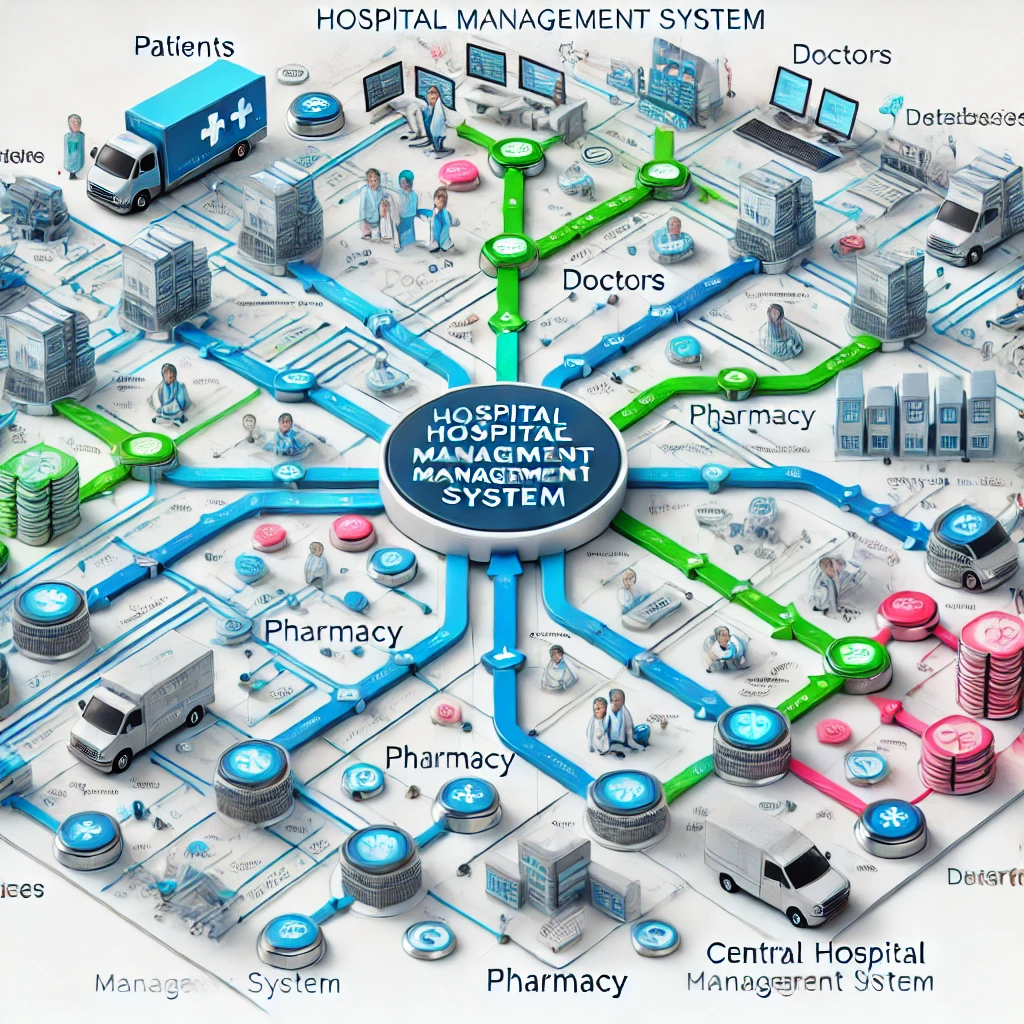In the fast-evolving landscape of healthcare, efficiency and accuracy are critical. A Hospital Management System (HMS) is the cornerstone of modern medical facilities, ensuring smooth operations and patient satisfaction. This blog delves into the Data Flow Diagram (DFD) of a Hospital Management System, highlighting its components, functionality, and benefits.

What is a Data Flow Diagram (DFD)?
A Data Flow Diagram (DFD) is a visual representation of the flow of data within a system. It showcases how information enters, moves through, and exits a system while interacting with external entities and data stores. In the context of a hospital, the DFD provides a clear roadmap of how critical processes, such as patient registration, appointment management, and billing, are handled.
Components of the DFD for a Hospital Management System
1. External Entities
External entities are the stakeholders interacting with the system:
- Patients: Provide personal details, schedule appointments, and make payments.
- Doctors: Access patient records and update medical diagnoses or prescriptions.
- Admins: Manage hospital resources, staff, and operations.
- Pharmacy: Dispenses medications based on prescriptions.
- Laboratory: Conducts tests and shares results with the system.
2. Processes
The HMS processes include:
- Patient Registration: Collects patient details and generates a unique ID.
- Appointment Management: Schedules and confirms appointments.
- Medical Records Management: Updates and retrieves patient diagnoses and test results.
- Pharmacy Management: Handles prescription processing and inventory.
- Billing Management: Generates invoices and processes payments.
- Laboratory Management: Handles test requests and records results.
3. Data Stores
Key data repositories in the system:
- Patient Database: Stores patient details and medical history.
- Appointment Schedule: Keeps track of appointments.
- Medical Records Database: Contains diagnoses, test results, and treatment plans.
- Inventory Database: Tracks pharmaceutical stock.
- Billing Database: Records financial transactions.
- Lab Reports Database: Stores test results.
How the Data Flows in the System
The diagram outlines the seamless data flow within the system:
- Patient Registration: Patients provide their details, which are stored in the Patient Database.
- Appointment Scheduling: Patients request appointments, confirmed by the system and stored in the Appointment Schedule.
- Doctor Interaction: Doctors access patient records from the Medical Records Database, update diagnoses, and send prescriptions to the pharmacy.
- Laboratory Management: Test requests are processed, and results are stored in the Lab Reports Database.
- Pharmacy Operations: Prescriptions are fulfilled, and inventory is updated in the Inventory Database.
- Billing and Payments: Services are billed, and transactions are logged in the Billing Database.
Benefits of Using a Hospital Management System
- Improved Efficiency: Streamlined processes reduce administrative burdens.
- Enhanced Accuracy: Automated data management minimizes errors.
- Better Patient Experience: Quick and reliable services improve satisfaction.
- Integrated Operations: Unified data stores ensure consistency and accessibility.
- Scalability: The system can grow with the hospital’s needs.
Conclusion
A Hospital Management System’s Data Flow Diagram is a powerful tool for understanding the intricate processes within a medical facility. By streamlining data flow, hospitals can enhance operational efficiency, reduce errors, and deliver superior patient care. Adopting such systems is no longer a choice but a necessity in today’s healthcare environment.
For more insights on healthcare management software, feel free to explore our resources or contact us for a consultation.

